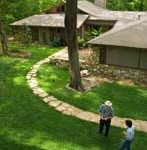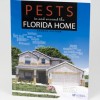
Many types of traps can be used to monitor or control insect pests. Traps to capture insects vary greatly, depending on the target, location, and purpose. Traps may be inexpensive and disposable, or more complex. This 12-page fact sheet describes several traps for common pests in the home, garden, and landscape that can be made using common household materials or that are readily available in stores. Written by Steven Arthurs and Adrian Hunsberger and published by the Entomology and Nematology Department.
http://edis.ifas.ufl.edu/in1103
Tag: Household and Structural Pests
Mejorando la efectividad de un programa profesional para el manejo de plagas
 El propósito de esta guía es proporcionar información que permita optimizar el control de plagas en el entorno del hogar cuando se trabaja con un operador profesional para el control de plagas. This 2-page fact sheet is a Spanish language translation of Enhancing the Effectiveness of a Professional Pest Management Program, written by Frederick M. Fishel and Tatiana Sanchez, and published by the UF Department of Agronomy, March 2014.
El propósito de esta guía es proporcionar información que permita optimizar el control de plagas en el entorno del hogar cuando se trabaja con un operador profesional para el control de plagas. This 2-page fact sheet is a Spanish language translation of Enhancing the Effectiveness of a Professional Pest Management Program, written by Frederick M. Fishel and Tatiana Sanchez, and published by the UF Department of Agronomy, March 2014.
http://edis.ifas.ufl.edu/pi252
How To Buy Pest Control Services
 Pest control, like any kind of business, is a joint venture between the company and the customer. As with many businesses, customers may have difficulty judging whether they have received the most skilled efforts for their money. This 4-page fact sheet should help customers objectively look at the service they are buying to determine its merit. Written by P. G. Koehler, and published by the UF Department of Entomology and Nematology, July 2013. This fact sheet updates a chapter of SP134: Pests in and around the Florida Home, which is available from the IFAS Extension Bookstore.
Pest control, like any kind of business, is a joint venture between the company and the customer. As with many businesses, customers may have difficulty judging whether they have received the most skilled efforts for their money. This 4-page fact sheet should help customers objectively look at the service they are buying to determine its merit. Written by P. G. Koehler, and published by the UF Department of Entomology and Nematology, July 2013. This fact sheet updates a chapter of SP134: Pests in and around the Florida Home, which is available from the IFAS Extension Bookstore.
http://edis.ifas.ufl.edu/mg237
EENY-437/IN776 Clover Mite Bryobia praetiosa Koch
EENY-437, a 4-page illustrated fact sheet by Celina Gomez and Russell F. Mizell III, is part of the Featured Creatures collection. It describes this plant-feeding mite found in landscapes that can invade homes in large numbers after heavy rains, excessive heat, or changes in the season. Includes references. Published by the UF Department of Entomology and Nematology, August 2008.
http://edis.ifas.ufl.edu/IN776